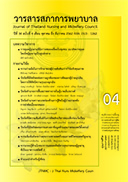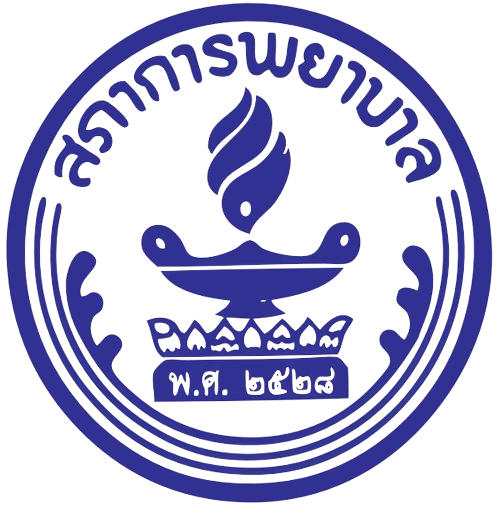Glaucoma Patients’ Adherence to Therapy: Qualitative Research
Keywords:
adherence to therapy, glaucoma patients, qualitative researchAbstract
Objective: To describe glaucoma patients’ defnition of ‘adherence to therapy’and to identify factors contributing to the patients’ adherence to therapy.
Design: Qualitative research.
Methodology: The informants in this study were ten purposively sampled patients ophthalmologically diagnosed with glaucoma. Data were collected from January to June,2017, using in-depth interviews along with non-participatory observation and feld records.The data were analysed using content analysis.
Results: The informants defned ‘adherence to therapy’ as following the ophthalmologist’s instructions by using eye-drops or taking the medication as prescribed, attending follow-up visits and adjusting their behaviour through self-regulation. The factors identifed as contributing to the patients’ adherence to therapy were 1) fear of blindness; 2) intention to fulfll life goals; 3) confdence in health-care personnel; 4) support from families; and 5) suffcient knowledge of the therapy.
Recommendations: This study helped build an understanding of ‘adherence to therapy’ based on glaucoma patients’ experiential point of view. The fndings of this study could serve as primary data for the development of glaucoma therapy guidelines,which could prevent permanent blindness.
Downloads
References
Ophthalmol 2006;90: 262–67. doi: 10.1136/ bjo.2005.081224. Pubmed PMID: 16488940.
2. Chantra S. Eye problem in aging. Healthtoday Thailand. 2553:10(110): 88-91.
3. Makornwattana M. Glaucoma is silent danger... taken the light from you forever. Bangkok: Thammasat
printing house; 2009.
4. Denis P. Adverse effect, adherence and cost-benefts in glaucoma treatment. European Ophthalmic Review.
2011; 5(2): 116-22.
5. World Health Organization. Adherence to long-term therapies: evidence for action. Switzerland: World
Health Organization; 2003.
6. Slealth B, Blalock S, Covert D, Stone JL, Skinner AC, Muir K, Robin A. The relationship between glaucoma medication adherence, eye drop technique, and visual feld defect severity. Ophthamology.
2011; 118(12): 2398-402.
7. Schwart GF. Quigley HA. Adherence and persistence with glaucoma therapy. Surv Ophthalmol. 2008;
53(1): 57-68.
8. Zimmeman TJ, Zalta AH. Facilitation patient compliance in glaucoma therapy. Surv Ophthamol. 1983;
28(suppl): 252-58.
9. Olthoff GM, Schouten JS, Borne BW, Webers CA. Noncompliance with ocular hypotensive treatment
in patients with glaucoma or ocular hypertension. Ophthamology. 2005; 112(6): 953-61.
10. Lacey J, Cate H, Broadway DC. Barriers to adherence with glaucoma medication: a qualitative research
study. Eye. 2009; 23(4): 924–32. doi:10.1038/ eye.2008.103. PubMed PMID: 18437182.
11. Pong JCF, Lai JSM, Tham CCY, Lam, DSC. Compliance with topical antiglaucoma medications. HKJ Ophthamol.
2003; 9(1): 12-5.
12. Horne R, Parham R, Driscoll R, Robinson A. Patients’ attitudes to medicines and adherence to maintenance
treatment in inflammatory bowel disease. Inflamm Bowel Dis. 2009, 15(6): 837-44.
13. Schwartz GF. Improving patient’s adherence to glaucoma therapy. GT. 2011, early spring: 53-63.
14. Dey I. Qualitative data analysis: a user-friendly guide for social scientist. New York: Routledge; 1993.
15. Lincoln YS, Guba EG. Naturalistic inquiry. Newbury Park, CA: Sage; 1985.
16. Leelachaikul Y. Medicine treatment for glaucoma. Bangkok: Kor Pai; 2001.
17. Amro R. Cox CL. Hill M. Adherence: compliance, persistence and concordance in the management of glaucoma, part 2. International Journal of ophthalmic practice. 2012, 3(1): 30-6. 18. Maddux JE, Roger RW. Protection motivation and self-effcacy: A revises theory of fear appeals and attitude change. JESP. 1983, 19(5): 469-79
19. Smith T. Adaptation to low vision caused by aged related macular degeneration: A case study. JVIB.2008, Nov: 725-31.
20. Loon SC. Jin J. Goh, MJ. The relationship between quality of life and adherence to medication in glaucoma
patients in Singapore. J Glaucoma. 2013. 00(00), 1-7.
21. Skalicky SE, Goldberg I. Adherence and persistence: the challenges for glaucoma medical therapy. APJO. 2013; 2(6): 356-361.
22. Taylor SA, Galbraith SM, Mills RP. Causes of non-compliance with drug regimens in glaucoma
patients: a Qualitative study. J Ocular Pharmacol Ther. 2002; 18(5): 401-9.33
23. Stryker JE, Beck AD, Primo SA, Echt KV, Bundy L, Pretorius GC, Glanz K. An exploratory study of
factors influencing glaucoma treatment adherence. J Glaucoma. 2010; 19(1): 66-72.
24. Rakkarn, W. Culture and Thai behavior. Bangkok: O.S.Printing; 1986. (in Thai)
25. Friedman DS, Hahn, SR, Gelb L, Tan J, Shah SN, Kim EE, et al. Doctor-patient communication,
health-related, beliefs, and adherence in glaucoma. Ophthalmology. 2008; 115(8): 1320-27.
26. Laotherdpong W, Kitsripisarn S, Makornwattana M. The factors predicting patients’ adherence to glaucoma therapy. TTJO. 2016;11(2): 19-33.








